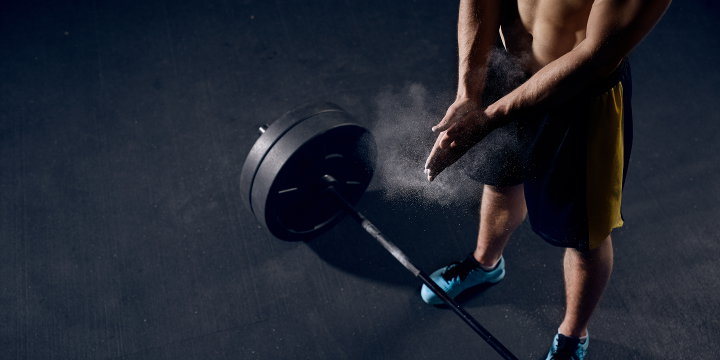After many years in the pharmaceutical and nutraceutical world, which includes supplements, there are fewer and fewer elements or discoveries that really get me excited or are of particular interest unrelated to my professional activities.
One day the president of Yamamoto Nutrition Italia sent me some supplements and raw materials to evaluate for their launch on the Italian market.
Some of these aroused my interest and approval; I had already seen one of these mentioned in scientific literature, and with positive results.
I'm talking about "alanyl-glutamine", better known commercially as "Sustamine".
Anyone who is involved in the fitness and sports world and uses supplements knows about its "cousin" glutamine, but this relative, at least in Italy, is still very little known.
It is a dipeptide that binds glutamine to alanine, resulting in a form that is very resistant to heat and acids, and presents a high level of solubility.
What is Alanyl-Glutamine?
Starting from its base, or a quick biochemical "review", alanine is a nonessential amino acid, while glutamine is considered "partially" essential; both are involved in the exchange of nitrogen between tissues and in the production and storage of glucose.

Chemical formulas of the amino acids L-Alanine and L-Glutamine
What is fundamental is the role they play in intracellular hydration; they are of particular interest for their use in intense workouts and other forms of physical stress.
Having said this, it seems that they act in a very similar manner. But more than anything else, I'd define their action as being rather synergistic, especially if we consider that alanine is the most important amino acid involved in the transportation of nitrogen from muscles to the liver.
Once they reach the liver, the carbon fraction of the amino acid skeleton is converted into glucose (a process called the glucose-alanine cycle).
And what has glutamine got to do with it?
Glutamine is the first "carrier" in cells of the nitrogen derived from the catabolism of proteins and it stimulates GLP-1 (glucose-like peptide-1), thus it helps maintain circulating glucose levels as well as promotes the synthesis of the same.
But the main factor that arouses my (and not only) interest is how it improves cellular hydration. Let's see how:
Alanine seems to influence hydration and cell volume by raising the concentration of intracellular potassium, dragging water inside the cell. Glutamine helps keep the equilibrium of the acid-base balance (a particularly popular subject in recent years).
But what has glutamine got to do with it?
Well, muscles produce lactic acid in training, which passes into the bloodstream and acidifies it, giving us that potentially pleasant feeling related to pump, which can then become annoying or a hindrance in certain sports performances.
The increase of lactic acid induces a decrease of pH, and renal glutamine consumption can be significant, which then indirectly raises the percentage of bicarbonate.
After the newly synthesised bicarbonate has reached the blood, it serves as a buffer by binding to the blood's acidic portion in order to make the pH neutral and restore the acid-base balance.
Why use it?
During particularly intense workouts, typical of bodybuilders and very serious physically stressful situations, the muscles release both amino acids in substantial quantities. If these concentrations are not restored, not only will the muscles themselves suffer, also performance, recovery, the immune system and other biological functions will suffer.

That's why, after having clarified where and how they synergistically carry out their functions, this dipeptide "combination" finds its best application with bodybuilders and athletes who perform intense and also prolonged activities that require a marked anti-catabolic action to protect muscles, thereby favouring protein and glucose synthesis as well as giving cells the chance to remain hydrated, and therefore in an anabolic state.
The benefits of Alanyl-Glutamine
The benefits of taking a dipeptide instead of a greater polypeptide chain relate to the aforementioned resistance to heat and acids, and the vastly improved solubility compared to glutamine thanks to the improved efficiency in its use.

Chemical formula of sustamine
Glutamine is rapidly degraded into ammonium when placed in solution and is barely soluble, while alanyl-glutamine is instead incredibly soluble.
This is all because where free form amino acids compete for their uptake with highly selective amino acid transporters, dipeptides are much more easily absorbed through much less selective carriers (PEPT1).
In animal models, alanyl-glutamine has led to an increase in weight and nitrogen retention, while decreasing muscle catabolism and leucine oxidation, and improving the intestinal flora environment.
And here I must note and add to the list of glutamine's important qualities its role as intestinal fuel and its support to the defensive role of the mucosa. But the beneficial role that reigns supreme is the cellular hydration provided by its extreme solubility and stability, and as I mentioned this has already been clearly documented.
Doctors Roger Harris and Jay Hoffman ascertained that the concentrations of glutamine in blood were almost 60% higher in subjects who took alanyl-glutamine than in those who took the free form of glutamine, which then became a total level of plasma glutamine of 126%.
Another interesting finding of the studies is that the regular consumption of alanyl-glutamine appears to increase the levels of muscle glutamine much more than the regular consumption of free form glutamine.
What are its applications?
The main areas of application for alanyl-glutamine are the same as with glutamine (please see my article on its functions):
- anti-catabolic/cellular hydration actions
- favours protein and glycogen synthesis
- supports the intestinal mucosa, and thus the immune system

Adding alanyl-glutamine to an oral rehydration solution or beverage seems to significantly increase the absorption of water and electrolytes at a cellular level, compared to the addition of L-glutamine or glucose.
This factor is already interesting. In a study by Hoffman and associates, the researchers concluded that the increase in the performance of university-level cyclists that emerged was due to the increase of water and electrolyte absorption, which was much more effective after having taken a Sustamine-based solution.
Those who took Sustamine were able to delay the onset of fatigue and generate only a modest level of dehydration. In this study, Hoffman's team also found that 1g of alanyl-glutamine in 500ml of water can maintain the quality of athletic movements and visual reaction time in a better way in athletes.
When the dose of the dipeptide was doubled in 500ml of water, fatigue decreased but there was no improvement in performance and reaction time. There is a good deal of literary material, which is quite interesting and promotes its use with high marks, (for example the study in the field of clinical nutrition) but must we consider the need for further investigations?
For example, there are still no studies on humans relating to the use of oral alanyl-glutamine to increase an athlete's muscle hypertrophy or strength; it would also be very interesting to study its effects during phases of high workload levels, low carb diets, low hydration levels and/or a combination of all these.
When should you use sustamine?
We all know the different roles that glutamine plays in various fields of application, and sustamine does not substantially deviate from these, it essentially adds a huge "plus" with its stability, and thus its ability to reach "where we want" in higher concentrations in order to best carry out its functions.

Its consumption on training days before and during exercise should be suggested for helping cellular hydration, electrolyte transport and the metabolism of glucose and branched amino acids.
After exercise it can be useful for supporting recovery, especially in phases of caloric and/or carbohydrate reduction.
On rest days it is instead recommended to fraction intake throughout the day, preferably along with a minimum intake of carbohydrates to optimise glycogen concentrations.
Alanyl-glutamine does not need to be cycled.
There is also evidence that chronic intake, compared to a single high dose, results in an increase in the concentration of glutamine in the muscles compared to those who take it in free form.
Having said that, I invite you to read the various scientific reviews. Most likely with this form of glutamine, we will guarantee the highest expression of the activities of dipeptides, in particular the benefits it offers for absorption, all obviously favouring improved efficacy.
Interesting new supplement on the horizon? I would say so.
References
1.Hirao Y1, et al Enzymatic production of L-alanyl-L-glutamine by recombinant E. coli expressing α-amino acid ester acyltransferase from Sphingobacterium siyangensis . Biosci Biotechnol Biochem. (2013)
2. Tabata K1, Hashimoto S Fermentative production of L-alanyl-L-glutamine by a metabolically engineered Escherichia coli strain expressing L-amino acid alpha-ligase . Appl Environ Microbiol. (2007)
3. Wernerman J Clinical use of glutamine supplementation . J Nutr. (2008)
4. Harris RC1, et al L-glutamine absorption is enhanced after ingestion of L-alanylglutamine compared with the free amino acid or wheat protein. Nutr Res. (2012)
5. Lima AA1, et al Effects of an alanyl-glutamine-based oral rehydration and nutrition therapy solution on electrolyte and water absorption in a rat model of secretory diarrhea induced by cholera toxin . Nutrition. (2002)
6. Hoffman JR1, et al Examination of the efficacy of acute L-alanyl-L-glutamine ingestion during hydration stress in endurance exercise . J Int Soc Sports Nutr. (2010)
7. Fürst P New developments in glutamine delivery . J Nutr. (2001)
8. Adibi SA The oligopeptide transporter (Pept-1) in human intestine: biology and function . Gastroenterology. (1997)
9. Alteheld B1, et al Alanylglutamine dipeptide and growth hormone maintain PepT1-mediated transport in oxidatively stressed Caco-2 cells . J Nutr. (2005)
10. Ford D1, Howard A, Hirst BH Expression of the peptide transporter hPepT1 in human colon: a potential route for colonic protein nitrogen and drug absorption . Histochem Cell Biol. (2003)
11. Haque SM1, et al Alanyl-glutamine dipeptide-supplemented parenteral nutrition improves intestinal metabolism and prevents increased permeability in rats . Ann Surg. (1996)
12. Tazuke Y1, et al Alanyl-glutamine-supplemented parenteral nutrition prevents intestinal ischemia-reperfusion injury in rats . JPEN J Parenter Enteral Nutr. (2003)
13. Petry ER1, et al Alanyl-glutamine and glutamine plus alanine supplements improve skeletal redox status in trained rats: involvement of heat shock protein pathways . Life Sci. (2014)
14. Cruzat VF1, Rogero MM, Tirapegui J Effects of supplementation with free glutamine and the dipeptide alanyl-glutamine on parameters of muscle damage and inflammation in rats submitted to prolonged exercise . Cell Biochem Funct. (2010)
15. Cruzat VF1, Tirapegui J Effects of oral supplementation with glutamine and alanyl-glutamine on glutamine, glutamate, and glutathione status in trained rats and subjected to long-duration exercise . Nutrition. (2009)
16. Rogero MM1, et al Effect of alanyl-glutamine supplementation on plasma and tissue glutamine concentrations in rats submitted to exhaustive exercise . Nutrition. (2006)
17. Wagenmakers AJ Muscle amino acid metabolism at rest and during exercise: role in human physiology and metabolism . Exerc Sport Sci Rev. (1998)
18. Wagenmakers AJ1, et al Carbohydrate supplementation, glycogen depletion, and amino acid metabolism during exercise . Am J Physiol. (1991)
19. Lochs H1, et al Splanchnic, renal, and muscle clearance of alanylglutamine in man and organ fluxes of alanine and glutamine when infused in free and peptide forms . Metabolism. (1990)
20. Satoh S1, et al Cloning and structural analysis of genomic DNA for human renal dipeptidase . Biochim Biophys Acta. (1993)
21. Satoh S1, et al Gene structural analysis and expression of human renal dipeptidase . Biotechnol Prog. (1994)
22. Kelley PM, Schlesinger MJ The effect of amino acid analogues and heat shock on gene expression in chicken embryo fibroblasts . Cell. (1978)
23. Lemaux PG, et al Transient rates of synthesis of individual polypeptides in E. coli following temperature shifts . Cell. (1978)
24. McAlister L, Finkelstein DB Heat shock proteins and thermal resistance in yeast . Biochem Biophys Res Commun. (1980)
25. Richter K1, Haslbeck M, Buchner J The heat shock response: life on the verge of death . Mol Cell. (2010)
26. Liu Y1, et al Human skeletal muscle HSP70 response to physical training depends on exercise intensity . Int J Sports Med. (2000)
27. Hoffman JR1, et al L-alanyl-L-glutamine ingestion maintains performance during a competitive basketball game . J Int Soc Sports Nutr. (2012)
28. Dougherty KA1, et al Two percent dehydration impairs and six percent carbohydrate drink improves boys basketball skills . Med Sci Sports Exerc. (2006)
29. Hoffman JR1, Stavsky H, Falk B The effect of water restriction on anaerobic power and vertical jumping height in basketball players . Int J Sports Med. (1995)
30. Baker LB1, et al Progressive dehydration causes a progressive decline in basketball skill performance . Med Sci Sports Exerc. (2007)
31. Leite RD1, et al Improvement of intestinal permeability with alanyl-glutamine in HIV patients: a randomized, double blinded, placebo-controlled clinical trial . Arq Gastroenterol. (2013)
